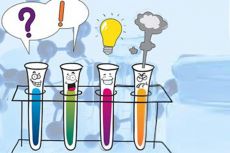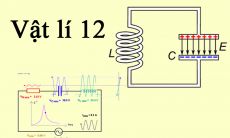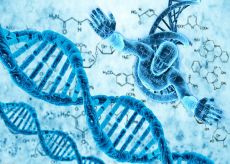Read the following passage and mark the letter A, B, C, or D to indicate the correct answer to each of the questions
People have been donating blood since the early twentieth century to help accident victims and patients undergoing surgical procedures. Usually a pint of whole blood is donated, and it is then divided into platelets, white blood cells, and red blood cells. People can donate blood (for red blood cells) about once every two
months. Transfusing the blood from the donor to the recipient is straightforward. It involves taking the blood from a donor’s arm vein by means of a hypodermic syringe. The blood flows through a plastic tube to a collection bag or bottle that contains sodium citrate, which prevents the blood from clotting. When the blood is given to a patient, a plastic tube and hypodermic needle are connected to the recipient's arm. The blood flows down from the container by gravity. This is a slow process and may last as long as 2 hours to complete the infusion of blood into the recipient. The patient is protected from being infected during the transfusion. Only sterile containers, tubing, and needles are used, and this helps ensure that transfused or stored blood is not exposed to disease causing bacteria. Negative reactions to transfusions are not unusual. The recipient may suffer an allergic reaction or be sensitive to donor leukocytes. Some may suffer from an undetected red cell incompatibility. Unexplained reactions are also fairly common. Although they are rare, other causes of such negative reactions include contaminated blood, air bubbles in the blood, overloading of the circulatory system through administration of excess blood, or sensitivity to donor plasma or platelets. Today, hospitals and blood banks go to great lengths to screen alt blood donors and their blood. All donated blood is routinely and rigorously tested for diseases, such as HIV, hepatitis B, and syphilis. When the recipient is a newborn or an infant, the blood is usually irradiated to eliminate harmful elements. Donated blood is washed, and the white blood cells and platelets removed. Storing the blood sometimes requires a freezing process. To freeze the red blood cells, a glycerol solution is added. To unfreeze the, the glycerol is removed. The ability to store blood for long periods has been a boon to human health.
Câu 44 : All of the following are mentioned as potential negative reactions to transfusion EXCEPT _____.
Suy nghĩ và trả lời câu hỏi trước khi xem đáp án
Lời giải:
Báo saiGiải thích:
Tất cả những điều sau đây được đề cập là phản ứng tiêu cực có thể xảy ra đối với việc truyền máu NGOẠI TRỪ _____.
A. bọt khí trong máu
B. dị ứng
C. nhạy cảm với bạch cầu của người hiến tặng
D. sự không tương thích của hồng cầu
Thông tin:
+ Negative reactions to transfusions are not unusual. The recipient may suffer an allergic reaction or be sensitive to donor leukocytes. Some may suffer from an undetected red cell incompatibility. (Phản ứng tiêu cực đối với việc truyền máu không phải là bất thường. Người nhận có thể bị phản ứng dị ứng hoặc nhạy cảm với bạch cầu của người hiến tặng. Một số có thể mắc chứng không tương thích hồng cầu chưa được phát hiện.)
→ B, C, D đúng
+ Although they are rare, other causes of such negative reactions include contaminated blood, air bubbles in the blood, overloading of the circulatory system through administration of excess blood, or sensitivity to donor plasma or platelets. (Mặc dù chúng hiếm gặp, các nguyên nhân khác gây ra các phản ứng tiêu cực như vậy bao gồm máu bị ô nhiễm, bong bóng khí trong máu, quá tải của hệ thống tuần hoàn thông qua việc cung cấp máu dư thừa, hoặc nhạy cảm với huyết tương hoặc tiểu cầu của người hiến tặng.) → bọt khí trong máu là nguyên nhân, không phải phản ứng tiêu cực
→ A sai
→ Chọn đáp án A
Câu 45 : What can the phrase "go to great lengths" best replaced by?
Suy nghĩ và trả lời câu hỏi trước khi xem đáp án
Lời giải:
Báo saiCó thể thay thế cụm từ "go to great lengths" bằng gì?
A. loại bỏ
B. thường xuyên
C. chiếu xạ
D. nghiêm ngặt
Kiến thức từ vựng:
Go to great lengths: đầu tư, cố gắng hoặc làm việc rất nhiều để đạt được điều gì đó = rigorously
→ Chọn đáp án D
Câu 46 : According to the passage, how often can people donate blood for red blood cells?
Suy nghĩ và trả lời câu hỏi trước khi xem đáp án
Lời giải:
Báo saiGiải thích:
Theo đoạn văn, người ta có thể hiến máu để có hồng cầu ở tần suất thế nào?
A. bốn tháng một lần
B. hai tháng một lần
C. hàng tháng
D. ba tháng một lần
Thông tin: People can donate blood (for red blood cells) about once every two months. (Mọi người có thể hiến máu (để lấy hồng cầu) khoảng hai tháng một lần.)
→ Chọn đáp án B
Câu 47 : What answer choice is closest in meaning to the word "undetected"?
Suy nghĩ và trả lời câu hỏi trước khi xem đáp án
Lời giải:
Báo saiTừ “undetected” có nghĩa gần nhất với đáp án nào?
A. không tìm thấy
B. không được minh họa
C. không được muốn
D. không bị bắt
Kiến thức từ vựng: undetected: không phát hiện, không tìm thấy = not found
→ Chọn đáp án A
Câu 48 : The word "it" in paragraph 1 refers to _____.
Suy nghĩ và trả lời câu hỏi trước khi xem đáp án
Lời giải:
Báo saiTừ “it” trong đoạn 1 đề cập đến ________
A. nạn nhân tai nạn
B. quá trình phẫu thuật
C. bệnh nhân phẫu thuật
D. một panh máu toàn phần
Thông tin: Usually a pint of whole blood is donated, and it is then divided into platelets, white blood cells, and red blood cells.
(Thông thường, một panh máu toàn phần được hiến tặng, sau đó nó được chia thành tiểu cầu, bạch cầu và hồng cầu.)
→ it = a pint of whole blood
→ Chọn đáp án D
Câu 49 : Based on the information in the passage, what can be inferred about blood transfused to infants and newborns?
Suy nghĩ và trả lời câu hỏi trước khi xem đáp án
Lời giải:
Báo saiDựa vào thông tin trong đoạn văn, có thể suy ra điều gì về việc truyền máu cho trẻ sơ sinh và trẻ dưới 1 tuổi?
A. Nó không được xử lý khác với người lớn.
B. Nó được kiểm tra nghiêm ngặt như máu cho người lớn.
C. Nó không nguy hiểm cho trẻ em.
D. Nó được xử lý bằng năng lượng bức xạ.
Thông tin: When the recipient is a newborn or an infant, the blood is usually irradiated to eliminate harmful elements.
(Khi người nhận là trẻ sơ sinh hoặc trẻ dưới 1 tuổi, máu thường được chiếu xạ để loại bỏ các yếu tố có hại.)
→ Chọn đáp án D
Câu 50 : What does the author imply in the passage?
Suy nghĩ và trả lời câu hỏi trước khi xem đáp án
Lời giải:
Báo saiTác giả ám chỉ điều gì trong đoạn văn?
A. Không thể ngăn chặn được hiện tượng chảy máu.
B. Hiến máu có lợi cho nhân loại.
C. Truyền máu là một quá trình nguy hiểm.
D. Đông lạnh máu làm phá hủy tiểu cầu.
Thông tin: The ability to store blood for long periods has been a boon to human health. (Khả năng lưu trữ máu trong thời gian dài là có lợi cho sức khỏe con người.)
→ Chọn đáp án B
Đề thi thử THPT QG năm 2022 môn Tiếng Anh
Sở GD&ĐT Hải Phòng












